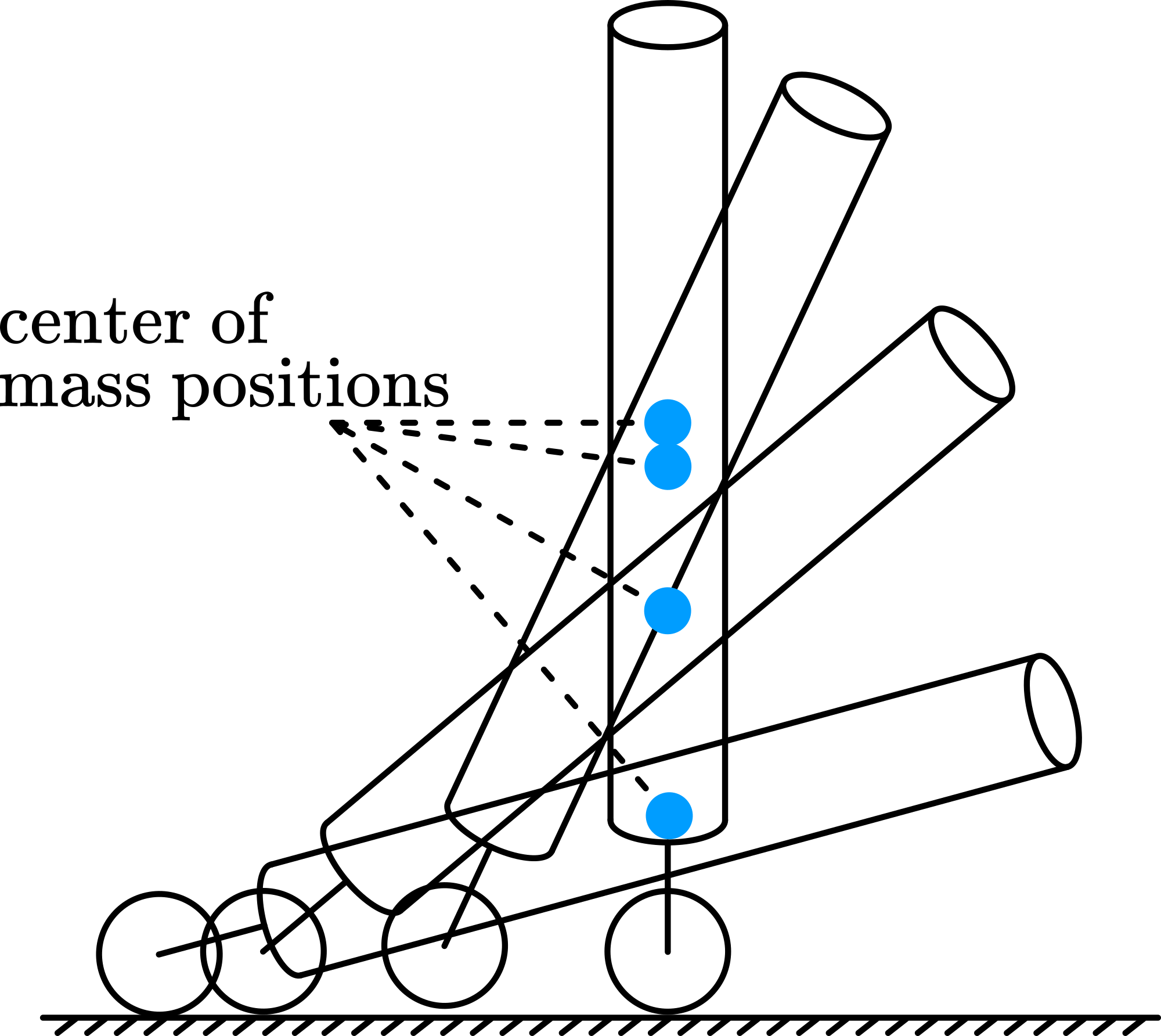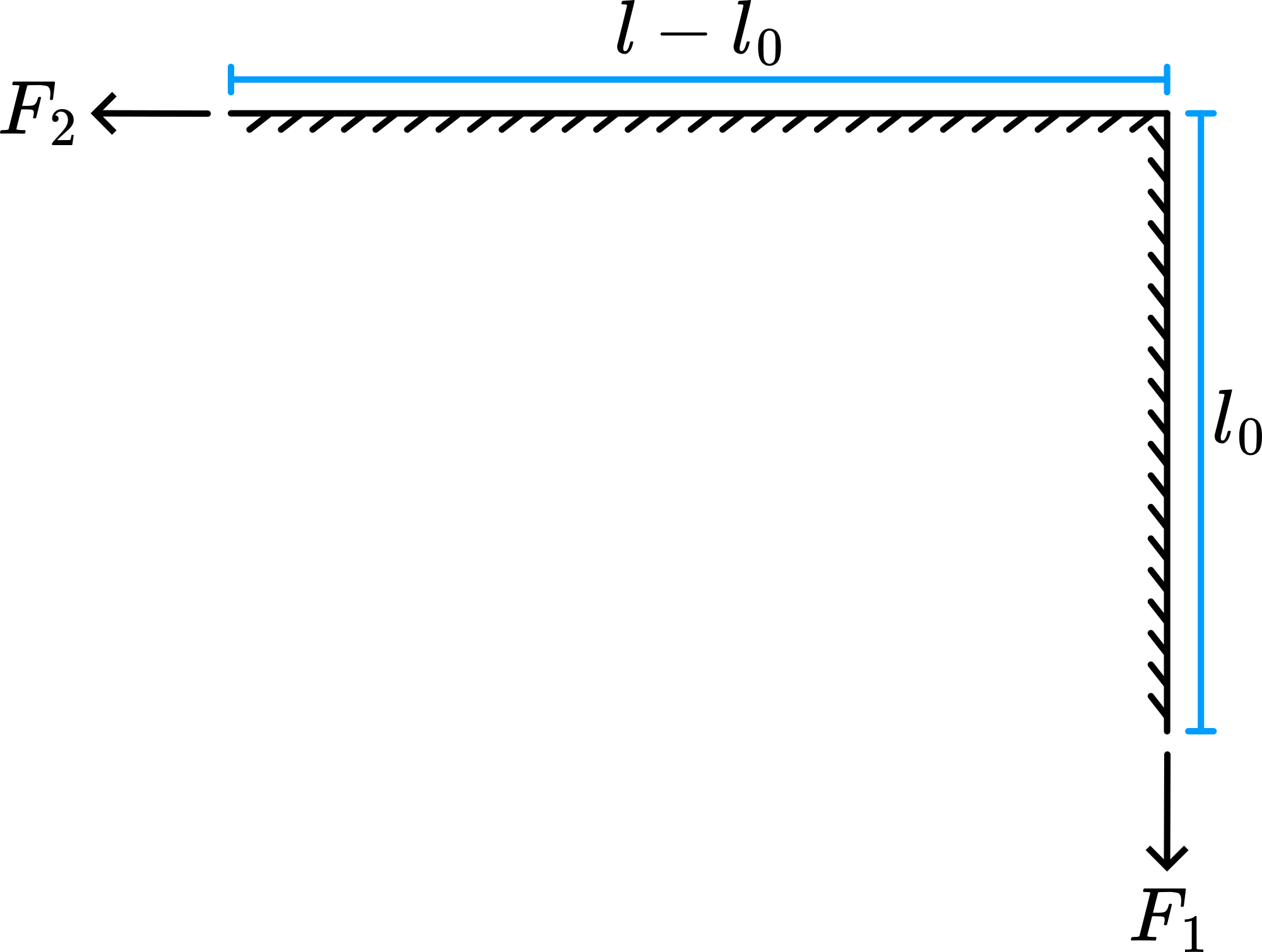06 Chain Friction#
Aim#
Determining the coefficient of static friction.
Subjects#
1K20 (Friction)
Diagram#

Fig. 118 .#
Equipment#
Table.
Chain, (\(l = 1.2\mathrm{~m}\)).
Bar.
Presentation#
The chain is laid out straight on a table. One end is slowly pulled over the edge until the chain just does not slip. The coefficient of friction \(\left(\mu_{s}\right)\) between the table top and chain is then \(\mu_{s}=\frac{l_{0}}{l-l_{0}}\), where \(l\) is the total length of the chain and \(l_{0}\) the length of the overhanging portion.
Explanation#
No slipping means that forces are in equilibrium: \(F_{1}=F_{2}\) (see Figure 119).

Fig. 119 .#
The mass of the part of the chain hanging over the edge equals: \(m_{1}=\frac{l_{0}}{l} m\). This makes: \(l_{0} F_{1}=\frac{l_{0}}{l} m g\).
The mass of the part of the chain still on the table equals: \(m_{2}=\frac{l-l_{0}}{l} m\).
The normal force of that part of the chain equals: \(F_{N}=\frac{l-l_{0}}{l} m g \rightarrow F_{2}=\mu_{\mathrm{s}} F_{N}=\mu_{s} \frac{l-l_{0}}{l} m g\).
\(F_{1}=F_{2}\) now yields: \(\frac{l_{0}}{l} m g=\mu_{s} \frac{l-l_{0}}{l} m g\), and so: \(\mu_{s}=\frac{l_{0}}{l-l_{0}}\).
Remarks#
It is advisable to make the corner of the table a low friction surface, e.g. rounding that corner. You can of course also make a special surface for your chain (acrylic plate, bended at one end). We used a stand bar as a low friction surface for the corner of the table.
Instead of a chain, the demonstration can also be done with a piece of soft cloth or rope.
Sources#
Meiners, Harry F., Physics demonstration experiments, part 1, pag. 152
